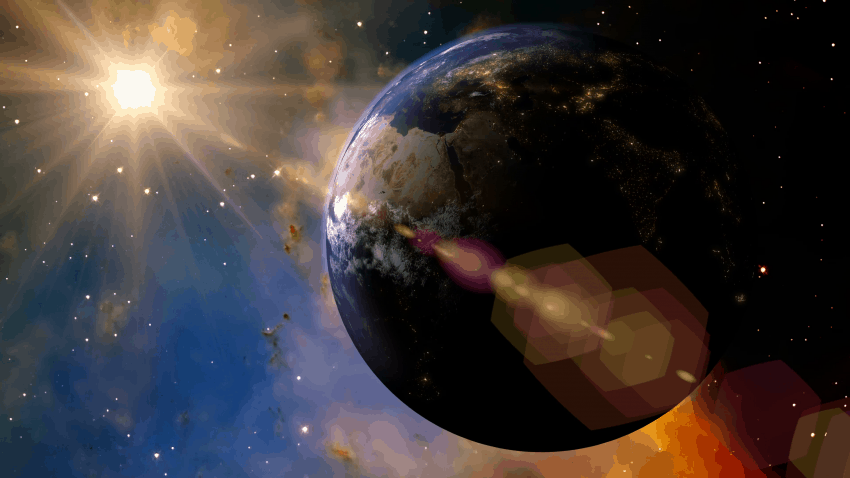
More surprising: this little gravitational game seems to last for at least 215 million years! According to a recent study by Dennis V. Kent, a professor at Rutgers University, gas giant Jupiter and our former “twin sister” Venus are lengthening – thanks to their gravitational force – the orbit of the Earth to a tiny degree, but nevertheless measurable every 405,000 years. The researcher believes that this highly predictable and long-lasting celestial model could be used to study geological changes on Earth, as well as the resulting environmental and ecological changes. And because this cycle goes back to the late Triassic era, it could even tell us something about dinosaurs.
Astronomers had suspected these gravitational influences for some years, but empirical evidence was lacking and global motion models dated back only 50 million years. To find evidence of this hypothetical cycle on Earth, researchers analyzed sediment samples taken from the United States in the Chinle Formation – in the Petrified Forest National Park in Arizona – and in the Newark Basin, bed of an old prehistoric lake. The samples taken from these sites were about 6 centimeters in diameter and about 500 meters in length. The deeper the researchers went, the more they went back in time to finally enter the Triassic Period, the first of three geological epochs in which dinosaurs lived.
By analyzing the samples, the team listed long-term data on inversions of the magnetic poles of the Earth. These periodic – but irregular – reversals can be observed in sediments containing zircon minerals with uranium, which can be used for radiocarbon dating, allowing the sample to serve as a clock. Climate changes have been observed in sediments in the form of alternating periods of dry and wet weather. As noted in the study, the samples were correlated with a remarkably continuous cycle dating back some 215 million years to the Triassic period.
“Climate cycles are directly related to how the Earth rotates around the Sun, and slight variations in sunlight reaching the Earth lead to climate and ecological changes,” the researcher said in a statement, noting in passing that Earth’s orbit is growing by about 5% every 405,000 years.
As noted in the study, Venus, the planet closest to Earth, and Jupiter, the largest planet in the solar system, seem to be affecting our orbital trajectory due to their combined severity, and this every 405,000 years. As a result, the researcher suggests that seasonal changes on Earth could then be more pronounced, producing warmer summers, colder winters, wetter rainy seasons and more arid droughts. Currently, our planet is in the middle of the cycle, with the last major orbital influence occurring about 200,000 years ago.